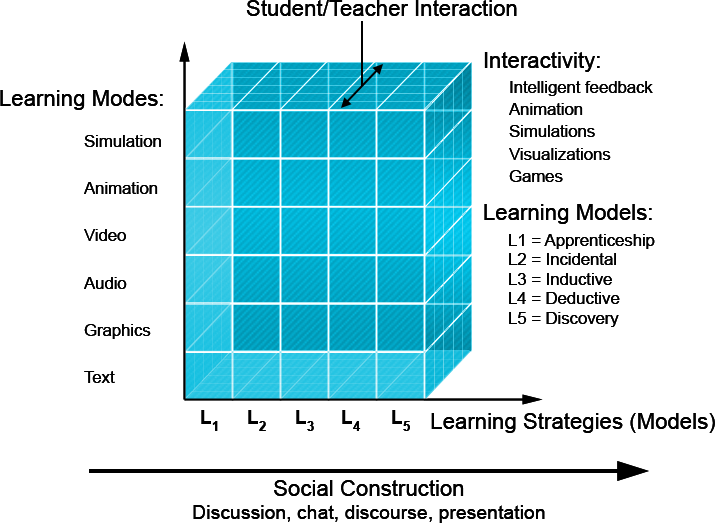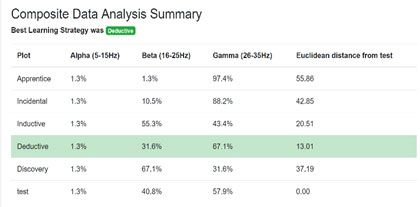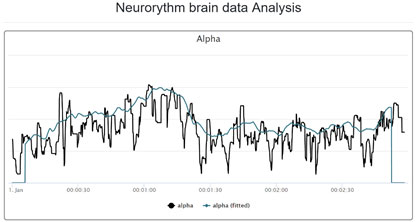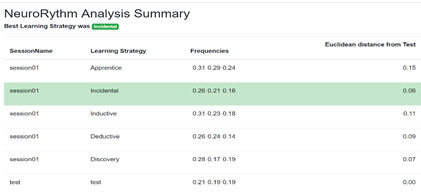Brainwave Learning Strategy Aptitude Test (BLSAT™)
We all know by our own learning experience that everyone learns differently. The learning strategies are methodologies used by an individual to overcome the learning deficit and reach desired leaning outcome.
It is the preferred pathway an individual takes to master a concept. There are different pathways defined by the cognitive psychological presentation of the content. These presentations are also referred to as differentiated instructional design based on the use of media, models, interactivity and social interaction assembled for an online learning curriculum, as shown in Figure 1..

The five learning strategies used for the assessment come from the extensive research of behaviorist, cognitivist and constructivist literature. The apprentice learning strategy belongs to the behaviorist learning models which deals with the operand conditioning based on the linear learning and rewards. Incidental and discovery belong to the constructivist learning models and the induction and deduction are well recognized learning models from the cognitivist research. As shown in Figure 2, the learner is rotated through all five learning strategies for sampling brainwave data for alpha, beta and gamma frequency bands using EEG Headband.


The Composite Brainwave Analysis: The brainwave learning strategy aptitude test (BLSAT™) is designed for the rapid identification of the learning strategy that induces the highest attention state in an individual leading to highest engagement with the subject matter.
The BLSAT test is conducted using intellADAPT’s Brainiak™ App + EEG Headband + adaptive content presentations. A learner can sample five learning strategies – apprentice, incidental, inductive, deductive and discovery and an attention generating test state while the EEH headband collects the data on alpha, beta and gamma brain waves. As shown in Figure 3, the composite graph shows relative contribution of the brain wave power spectra. The data is collected and then a big-data machine learning analysis is conducted to find the best fit between the learning strategy and attention state using alpha, beta, gamma neuro- coordinates.
Neuro-rhythm Brainwave Analysis: Another analysis is conducted on the neuro-rhythm where the inherent frequency of the alpha, beta and gamma bands are calculated using regression analysis. The neuro-rhythm frequencies represent brain-state using alpha, beta and gamma acting as the neuro coordinates. The attention state provides the necessary reference to identify best learning strategy.
Figure 4 shows the neuro-rhythm analysis of the best learning strategy for a learner.
Figure 5 shows a sample neuro-rhythm analysis of Alpha brainwave. The two different methodologies are used to determine the best learning strategy.


